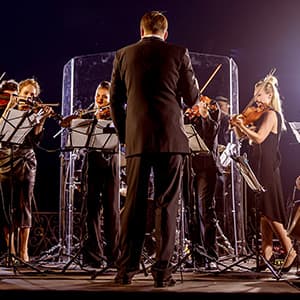

Ravels Piano Concerto Tickets
Up to 30% Off Compared to Competitors.
Location: Select Location (e.g, New York)
Events Nearby
We're Sorry. There are currently no events near you.
About Ravel's Piano Concerto
Currently, Ravel's Piano Concerto in G major is frequently performed in concert halls around the globe, with many orchestras featuring it in their season programs. Celebrated pianists often include it in their recitals, delighting audiences with its rhythmic vitality and lyrical expressiveness. Upcoming events feature notable performances featuring renowned artists, such as Lang Lang and Yuja Wang, who are known for their interpretive skills and technical excellence. The concerto's vibrant personalities and complex textures create an exhilarating experience for audiences, often accompanied by the engaging sounds of a full orchestra. Educational performances are also prevalent, aimed at introducing young musicians and concertgoers to Ravel's innovative styles and the concerto's place within the classical canon. Additionally, several orchestras have begun to incorporate modern multimedia elements during performances of this work, enhancing the listening experience and appeal to newer generations. Live recordings of recent performances are continually emerging, showcasing diverse interpretations of Ravel's dynamic work, ensuring its relevance and excitement in today's concert scene.
Ravel's Piano Concerto History
Maurice Ravel composed his Piano Concerto in G major between 1929 and 1931, a piece celebrated for its vibrant energy and eclectic influences. This concerto emerged during a period when Ravel was drawn towards American jazz and blues, themes which dramatically infused his work. Stemming from Ravel's yearning for a fusion of classical elements with contemporary styles, the concerto blends traditional forms with innovative harmonies and rhythms. Its premiere took place in 1932, conducted by the composer himself with the talented pianist Marguerite Long performing the solo part. The concerto is notable for its dual structure, showcasing both a lively first movement characterized by jazzy syncopations and a slow, languorous second movement that reflects a deep lyrical quality. Ravel wrote this concerto not only as a testament to his technical prowess but as an exploration of the emotional depth that the piano could convey. Over the decades, it has garnered immense popularity in concert halls worldwide, becoming a staple in the piano repertoire, lauded for its melodic inventiveness and orchestral color.
